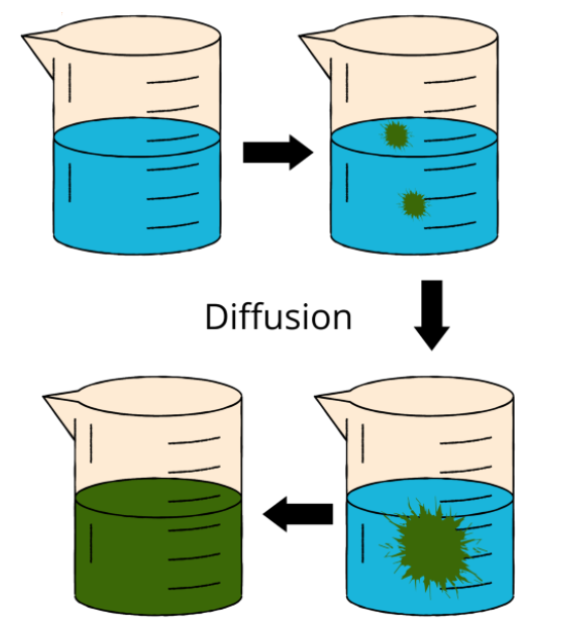Introduction
There is no life on Earth without reproduction. For an organism to be classified as a living being, it must be able to reproduce. Reproduction of an individual requires replication of DNA, the molecular basis of life. Nature would not have been as diverse if all organisms reproduced asexually, and there would be no variation among populations. As a result of meiosis, living organisms can undergo variations, which maintain biological diversity and assist in adapting and evolving.
Heredity and Accumulation of Variation During Reproduction
Reproduction passes genetic information from parents to offspring, resulting in the offspring acquiring the same characteristics as their parents. This process is called heredity. Species or groups of organisms of a species may differ in some way due to variation. Variations in sexually reproducing species result from three genetic processes: mutations, independent segregation of chromosomes, and genetic recombination.
Let our expert teachers be your guide toward improving your grades and reaching your highest potential. For more help, you can refer to EVS Class 5 Lesson 21. Check out the video Lesson for a better understanding.
Mutations
Mutations are arbitrary alterations to an organism’s genes that can come from biological, chemical, or physical sources. Alleles which are different versions of the same gene are produced as a result of these modifications in various members of the same species. A mutation is passed down to the next generation in asexually reproducing organisms during mitosis. These changes are integrated into sexually reproducing organisms, nevertheless, where they then undergo further reorganization during sexual reproduction.
Independent Assortment of Chromosomes
Homologous chromosome pairs are found in diploid eukaryotes. Both members of the pair have separate sets of alleles, with one inheriting a set from the mother and the other from the father. These homologous chromosomal pairs divide during meiosis, and the individuals in each pair are then segregated into various daughter nuclei, giving rise to haploid gametes. The number of chromosomal pairs that each gamete acquires is random and unrelated to the other pairings. The resulting diploid individual possesses traits from both parents. This also explains the genetic variances seen in siblings, who all get their personalities from the same parents yet have distinct alleles.
Chromosomal crossing over the homologous chromosomes undergoes an event called “chromosomal crossing over” just before the separation of homologous chromosomes occurs, which causes the recombination of genes on the chromosomes. Recombination involves the exchange of alleles from one chromosome’s homologue with those from the other. The likelihood of variation is increased in sexually reproducing organisms by chromosomal crossing over.
Why is it Important to have Variations?
The expansion of a population’s gene pool requires variation. Increased genetic diversity results from it. In actuality, the foundation of the entire evolutionary history of the planet is inheritance in combination with the variation of the inheritable genes (i.e., “descent with modification”).
Heredity and variations are the basis for
- Diversified generations of the same lineages
- The evolutionary advantage in adverse conditions
- Adaptations of organisms
- Evolution of new species
- For tracing the evolutionary history and classification of an organism’s
Molecular Basis of Inheritance (DNA and RNA)
Mendel’s research with garden peas laid the groundwork for genetics. He was aware that each “factor” had two “variants,” only one of which was passed down from each parent to the offspring, and that each “variant” was responsible for the features observable in organisms. But he didn’t know what this element was. Some ground-breaking studies, such as those conducted by Fredrick Griffith in 1928, Averty, MacLeod, and McCarty in 1944, and Hershey and Chase in 1952, provided unmistakable proof that the DNA, not RNA or proteins, is the molecular foundation of inheritance.
The cornerstone for the continuation of life is the nucleic acids DNA and RNA. The information is stored in the DNA as genes, which are transferred from one generation to the next. The phenotypic characteristics of an individual vary depending on what allele (a variant of a specific gene) is present on the chromosome.
Differences Between the DNA and the RNA:
| DNA | RNA |
| Comprises two polynucleotide strands, coiled around a common axis in a right-handed manner | The RNA molecule is a single polynucleotide strand |
| Adenine pairs with thymineCytosine pairs with guanine | Adenine pairs with uracilCytosine pairs with guanine |
| Contains a deoxyribose sugar | Contains a ribose sugar |
| Carries hereditary information in the form of nucleotide segments known as genes | Translates the gene transcripts (mRNA) from DNA into proteins |
Summary
Reproduction passes genetic information from parents to offspring, resulting in the offspring acquiring the same characteristics as their parents. Mutations are arbitrary alterations to an organism’s genes that can come from biological, chemical, or physical sources. Recombination involves the exchange of alleles from one chromosome’s homologue with those from the other. The phenotypic characteristics of an individual vary depending on what allele (a variant of a specific gene) is present on the chromosome.
Frequently Asked Questions
1. What are the Factors that Determine the Sex of a Human?
Ans. The sex chromosomes in humans control gender. Males have one X from the mother and one Y from the father, making up the XY sex chromosome combination, whereas females have the XX chromosome pair (one X chromosome from each parent).
2. Do all Characters Always Pass Down from Both Parents?
Ans. No. Some characteristics, and particularly some diseases, can be sex-related and be found on the sex chromosomes. In addition, we are aware that mitochondria contain their DNA. The mother alone is the exclusive source of this mitochondrial DNA. All other nuclear features are passed down through both parents.
3. What is meant by Somatic Variation?
Ans. Genetic material is either inherited or acquired by an offspring from its parents. However, the somatic (non-gametic) cells of the developing zygote may develop mutational alterations that are not integrated into the germline. These characteristics won’t be passed down to the person’s descendants.
4. Is there a chance of Genetic Variation Whenever there is a Crossing-Over?
Ans. On the non-sister chromatids of a homologous pair, the identical allele of a gene may cross over. Crossover may occur in this situation, but unless the alleles on the two chromosomes are distinct, no new variation will result.
5. What are Sex-Linked Traits? Give an Example.
Ans. Traits controlled by a sex chromosome gene or allele are known as sex-linked traits. X-linked recessive conditions are twice as common in females as in males: if 1 in 20 males in a population is red-green colourblind, then 1 in 400 females will be reversed colourblind.

